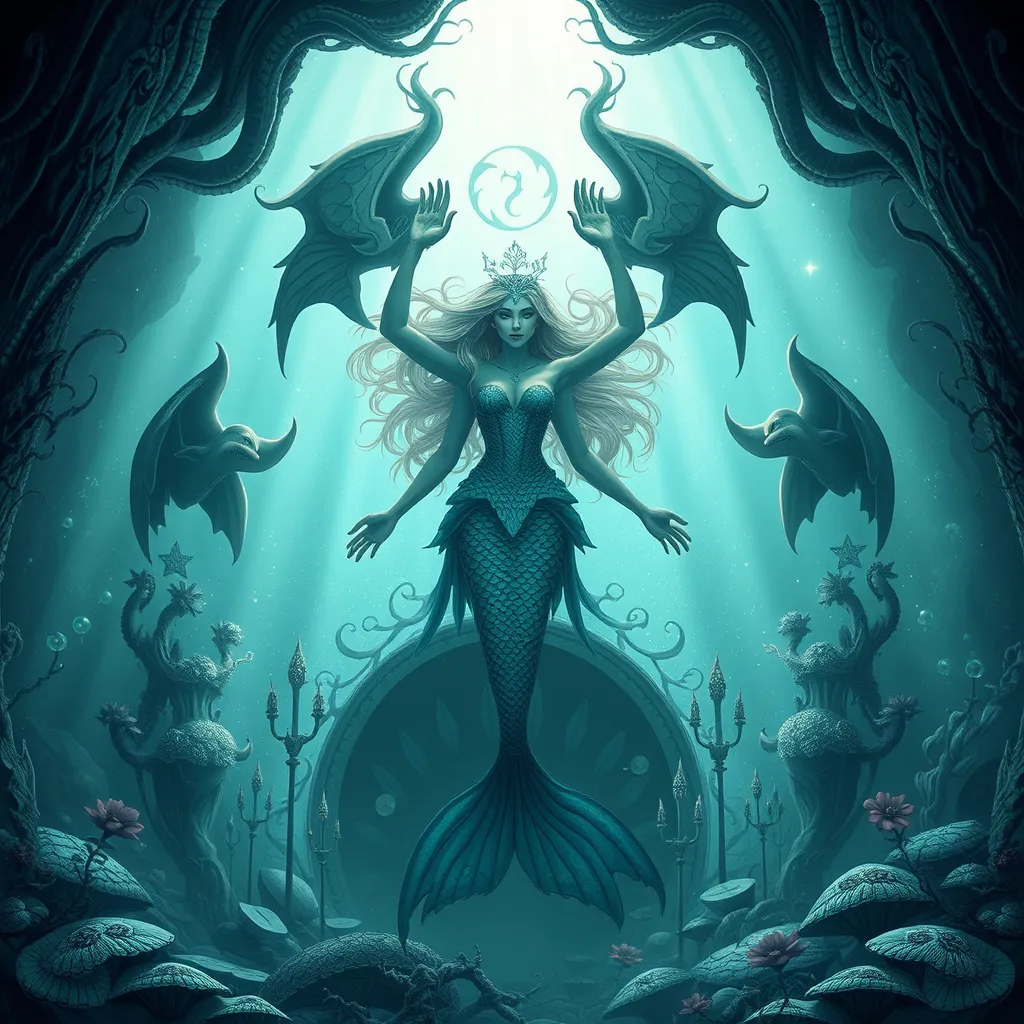The Mermaid’s Garden: Exploring Aquatic Mythology and Folklore
I. Introduction
Aquatic mythology and folklore encompass the rich tapestry of stories, beliefs, and cultural narratives centered around water and its mystical inhabitants. These tales often feature beings such as mermaids, sirens, and other water spirits that embody the beauty and danger of the sea.
Mermaids, in particular, hold a significant place in various cultural narratives, symbolizing both allure and peril. Their stories have captivated imaginations across generations, serving as cautionary tales, romantic legends, and reflections of humanity’s relationship with nature.
This article aims to explore the historical origins of mermaid legends, their symbolism in folklore, regional variations, their presence in literature and art, their role in modern pop culture, and the environmental themes intertwined with these enchanting beings.
II. Historical Origins of Mermaid Legends
The origins of mermaid legends can be traced back to ancient civilizations that revered sea deities. In these early cultures, the ocean was both a source of life and a realm of mystery, giving rise to various aquatic myths.
Throughout history, mermaid myths have evolved across different cultures:
- Mesopotamia: The goddess Atargatis, often depicted with a fish tail, is one of the earliest examples of a mermaid-like figure.
- Ancient Greece: Sirens, known for their enchanting songs, were often portrayed as half-bird, half-woman but later evolved into mermaid-like beings in popular culture.
- Europe: Tales of mermaids became widespread during the Middle Ages, influencing literature and folklore significantly.
Notable early texts and artifacts, such as the “Physiologus,” a Greek text from the 2nd century AD, depict mermaids and explore their dual nature, further solidifying their place in mythology.
III. The Symbolism of Mermaids in Folklore
Mermaids are rich in symbolism, often representing both beauty and danger. Their enchanting allure draws humans closer, while their hidden dangers serve as a warning against temptation.
The duality of the mermaid’s nature is a recurring theme:
- Seduction: Mermaids are often depicted as alluring figures who use their beauty and song to attract sailors.
- Peril: Many legends portray the tragic fate of those who succumb to their charms, highlighting the risks of following one’s desires without caution.
Cultural interpretations of mermaids vary widely, from benevolent protectors of the sea to vengeful spirits punishing those who disrespect the ocean. This duality reflects societal attitudes towards women and nature, making mermaids complex figures in folklore.
IV. Regional Variations of Mermaid Myths
Mermaid legends differ significantly across regions, each culture infusing its unique perspectives and values into the narratives.
- European mermaid legends: In addition to sirens, stories of Selkies, shapeshifting seals who can transform into humans, are prominent in Celtic folklore.
- African and Caribbean aquatic spirits: Mami Wata, a water spirit worshipped in many African cultures, embodies beauty and healing, often depicted with fish-like features.
- Asian interpretations: In Japan, Ningyo are fish-like creatures that bring misfortune or good luck, while Jiangshi are more ghostly figures associated with water and death.
These regional variations showcase the diversity of mermaid mythology and its connection to local beliefs and traditions.
V. Mermaids in Literature and Art
Mermaids have inspired countless literary works and artistic representations throughout history:
- Key literary works: Hans Christian Andersen’s “The Little Mermaid” is perhaps the most famous tale, exploring themes of sacrifice and longing.
- Artistic representations: From ancient pottery to Renaissance paintings, mermaids have been depicted in various forms, often symbolizing the allure of the unknown.
- Contemporary storytelling: Modern adaptations and retellings continue to explore mermaid themes, blending traditional elements with contemporary issues.
The impact of mermaid mythology on literature and art is profound, influencing not only storytelling but also cultural perceptions of beauty, danger, and femininity.
VI. The Role of Mermaids in Modern Pop Culture
In recent years, mermaids have experienced a resurgence in popular culture:
- Films and television shows: Movies like “The Little Mermaid” and series such as “H2O: Just Add Water” have captivated audiences, reimagining mermaid tales for new generations.
- Merchandise and media: The mermaid phenomenon has led to a plethora of merchandise, from toys to clothing, reflecting the enduring fascination with these mythical beings.
- Social media and fashion: Mermaids have become a trendy aesthetic, with influencers and fashion brands embracing the mermaid theme in various ways.
This modern portrayal of mermaids highlights their adaptability and relevance in contemporary society, as they continue to inspire creativity and imagination.
VII. Environmental Themes in Mermaid Folklore
Mermaids also serve as symbols of environmental consciousness in folklore:
- Guardians of the sea: Many stories depict mermaids as protectors of marine life, serving as reminders of our responsibility towards the ocean.
- Human impact: Folklore often reflects the consequences of human actions on aquatic ecosystems, warning of the dangers of pollution and overfishing.
- Modern interpretations: Contemporary retellings increasingly emphasize themes of ocean conservation and the importance of preserving marine habitats.
These environmental themes resonate with today’s ecological challenges, showcasing the enduring relevance of mermaid mythology in advocating for the protection of our oceans.
VIII. Conclusion
In summary, mermaids hold a significant place in mythology and folklore, symbolizing beauty, danger, and the complex relationship between humanity and nature. Their stories have evolved over centuries, reflecting cultural values and societal attitudes.
The enduring allure of aquatic myths continues to captivate contemporary culture, inspiring literature, art, and environmental awareness. As we explore these enchanting tales, we invite readers to engage with the rich world of aquatic mythology and consider the lessons it imparts about our relationship with the sea and its inhabitants.



